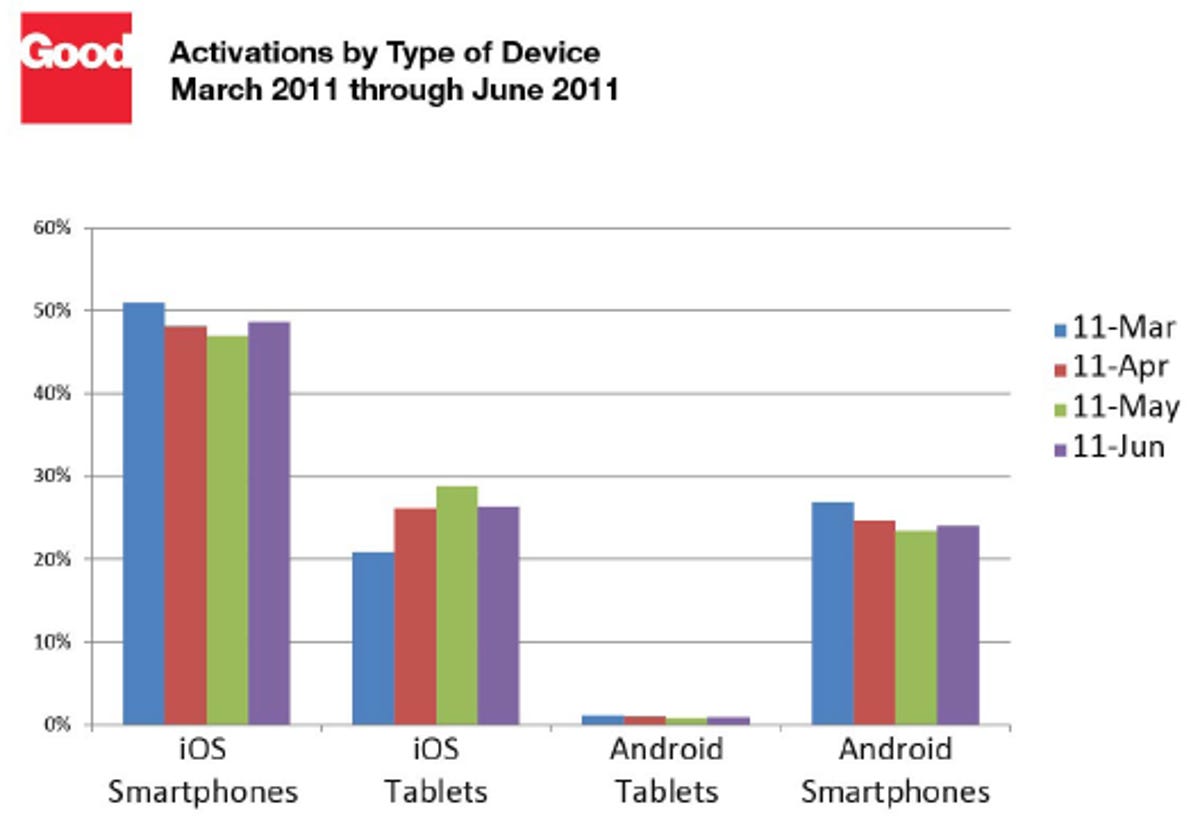Both Apple and Android have been capturing more mobile customers in the enterprise arena, but Apple’s iOS has been the dominant force thanks to growing demand for the iPad, according to mobile-software provider Good Technology.
Released yesterday, Good’s latest quarterly data report (PDF) found that more smartphones and tablets in general have been flooding the workplace. But Apple’s iOS has led the way, grabbing 80 percent of all device activations in the enterprise seen by Good during the second quarter. That marks an increase from just less than 70 percent in the first quarter.
The iPad itself (the original and the iPad 2) picked up 27 percent of all workplace device activations in the second quarter, according to Good. That proved higher than the number of activations for all Android smartphones (24 percent) over the same period.
“While Android may be gaining smartphone market share with consumers, our business users are clearly gravitating to the iPad and doing so in large numbers,” John Herrema, Good’s senior vice president of corporate strategy, said in a statement. “This is especially true in the Financial Services sector, which drove nearly half of all Good’s iPad activations over the quarter.”

Good Technology
Breaking down the numbers further, the iPad accounted for 95 percent of all tablet activations during the quarter, leaving Android tablets with only about 3 percent.
The iPhone also proved most popular among the corporate crowd. Despite the surge in growth for Android phones, the iPhone grabbed 66 percent of all smartphone activations in the second quarter, compared with 33 percent for Android phones.
Among Android devices in the workplace, the Motorola Xoom picked up the highest number of activations of any Android tablet, while the Motorola Droid 2 Global was the dominant Android smartphone, according to the report.
Good’s research is based on the number of devices by manufacturer and mobile OS that its enterprise users activated during the second quarter. This data is lacking in some ways since it doesn’t cover the full range of mobile platforms. As BlackBerry devices run on RIM’s BlackBerry Enterprise Server, Good is unable to monitor their activation rates. The company also doesn’t yet include Microsoft’s Windows Phone 7 or HP’s WebOS but has promised to add data for those systems by the end of the year.



